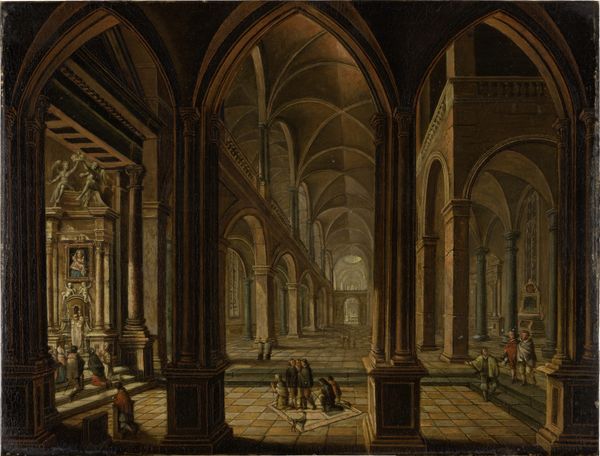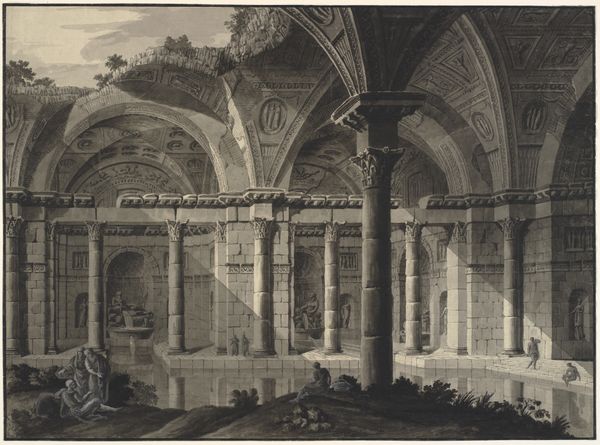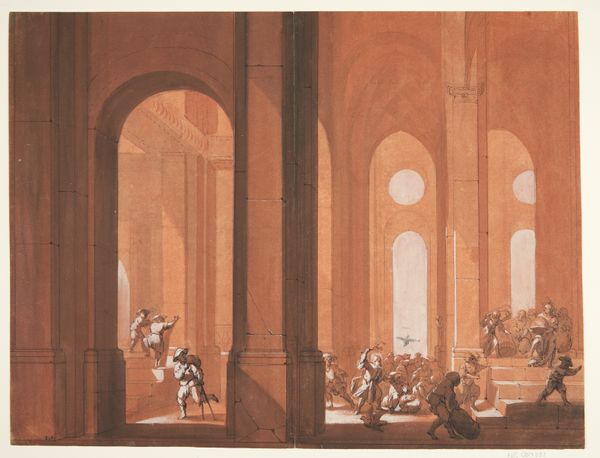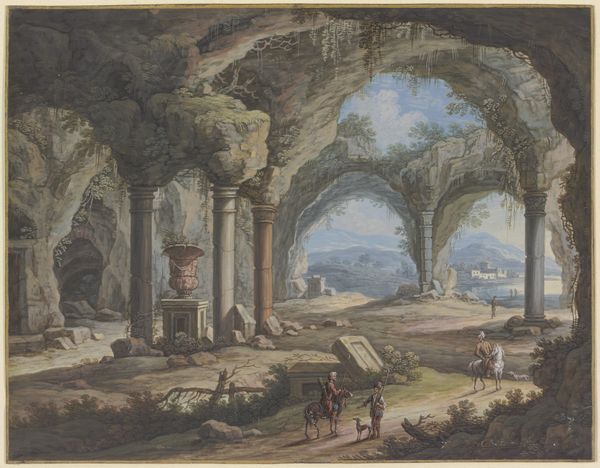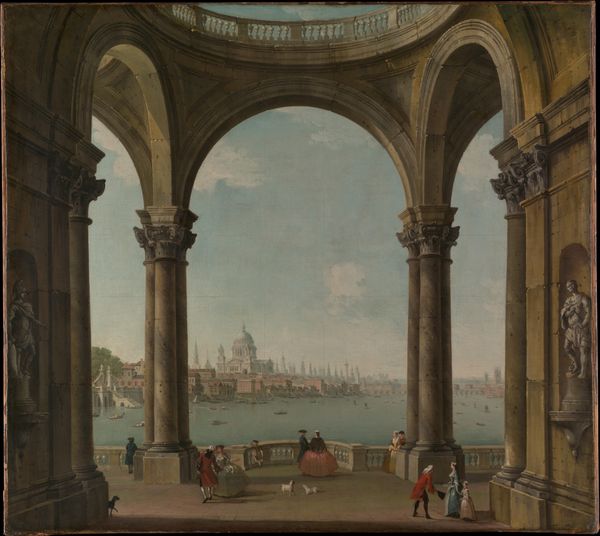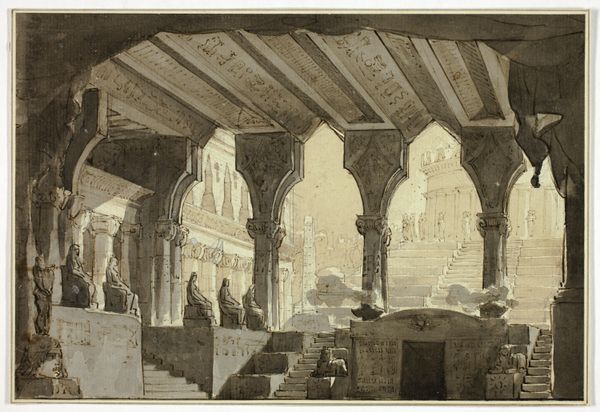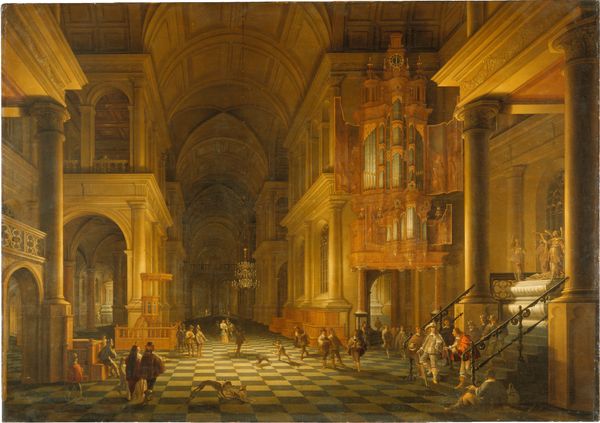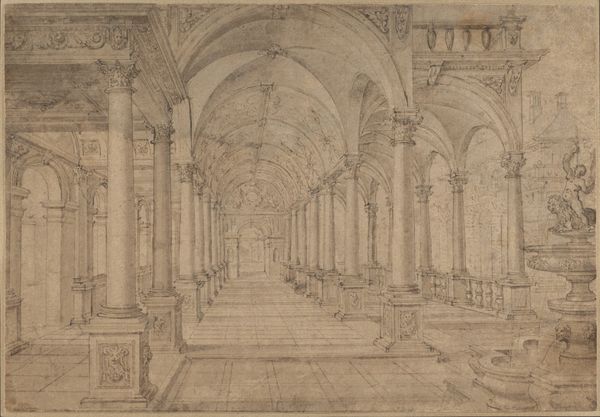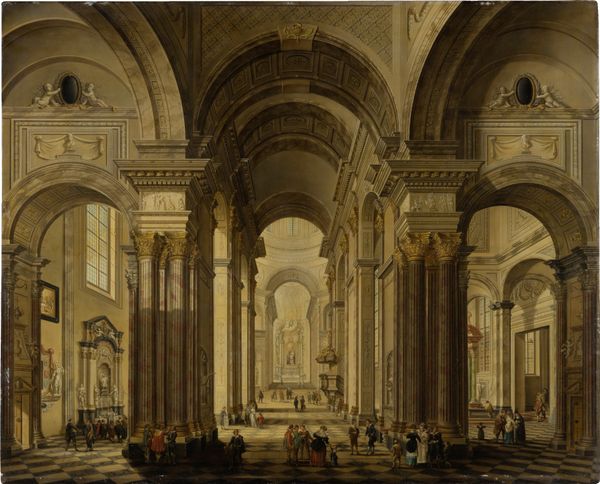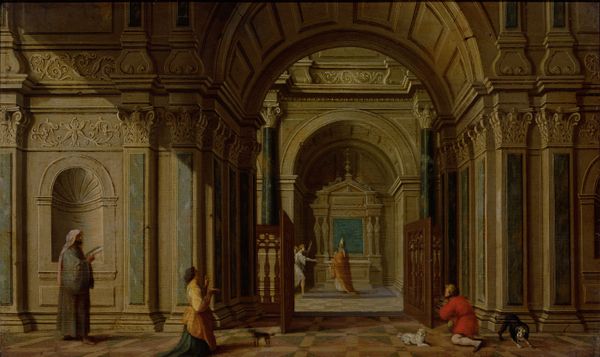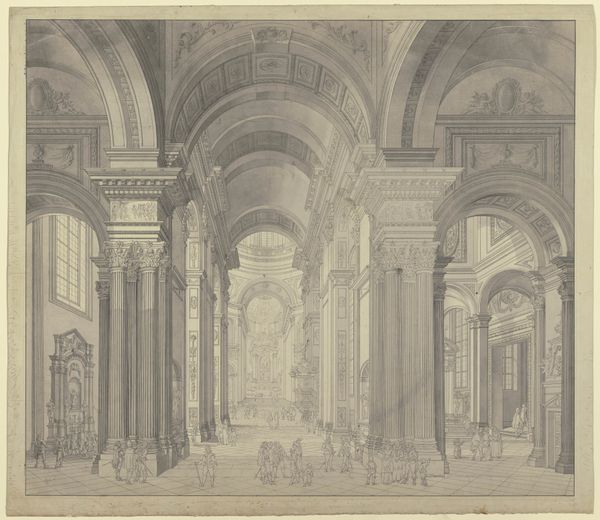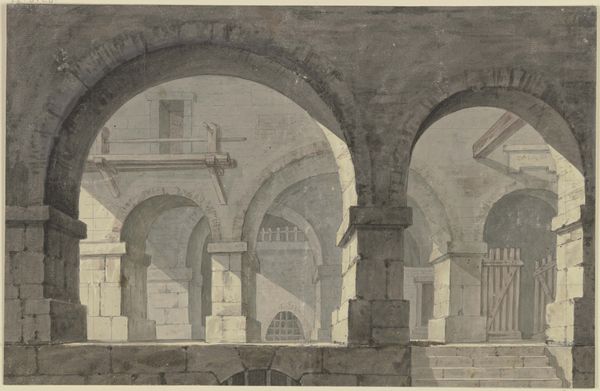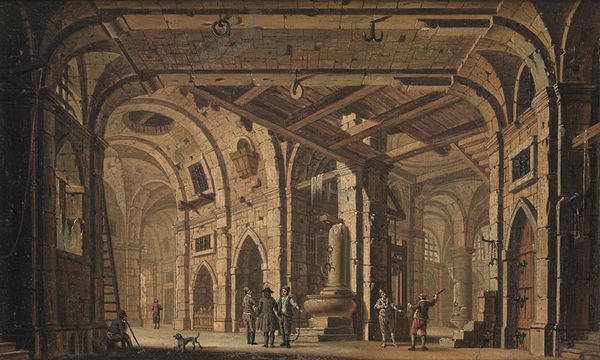
painting, oil-paint, architecture
#
baroque
#
painting
#
oil-paint
#
landscape
#
perspective
#
oil painting
#
history-painting
#
architecture
Dimensions: 96.7 x 133.4 cm
Copyright: Public Domain
Curator: Gazing at Antonio Joli's "Roman Bath," painted around 1745, the eye is immediately drawn to its scale—the sheer volume of this imagined space is quite striking. Editor: Yes, there is an odd stillness despite the figures frolicking in the water. It almost feels like a stage set, a tableau frozen in time. It invites a closer inspection into how such displays reflect early modern constructions of history, identity, and power, not only through depicting an architectural rendering of what was presumed to be an ancient social spa, but in turn making such acts part of 18th century imagination. Curator: And it’s precisely that stagelike quality that fascinates me from a material perspective. Joli's skillful manipulation of oil paint to mimic the textures of stone, water, and human flesh is quite remarkable. Consider the labor that went into mixing the pigments, preparing the canvas, and layering the paint to achieve this illusionistic effect. Each stage contributes to a specific vision, or better, a specific fabrication, a fiction for patrons. Editor: Absolutely, the depiction certainly romanticizes leisure while potentially obscuring power dynamics. One can imagine questions of hygiene and sanitation would certainly be at play during any era where a communal bath such as this existed. Who cleaned it, and whose bodies got access, and on what terms? This imagery carries with it not just representations of architectural styles, but also assumptions about an ideal world. Curator: It's important to recall that artworks like this weren't just meant to be pretty pictures; they also served very practical purposes, such as demonstrating the artist's skill to attract further commissions. Joli had a workshop, apprentices... This 'history painting' is as much a product of labor, trade and studio management, as it is a romantic ideal. Editor: Which makes one question the accessibility and distribution chains surrounding not just the art but also that vision for Rome, especially with increased European imperialist projects around this same moment. What labor underpinned their leisurely viewing and enjoyment? How are these reflections relevant and reflective of both that period and ours? Curator: Precisely! Thinking about Joli’s Roman Bath has definitely given me a greater appreciation for both the craft and the context in which it was created. Editor: Indeed. It highlights how aesthetics often carry historical complexities concerning labor and political thought, even when portraying leisure.
Comments
No comments
Be the first to comment and join the conversation on the ultimate creative platform.
